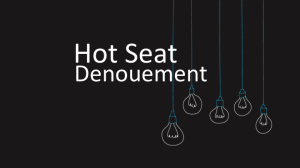Hot Seat Case #97 Denouement: 18 yo F with Abdominal Pain
Posted on: August 24, 2017, by : Haroon Shaukat MD
Haroon Shaukat, Children’s National Medical Center
The Case:
18 yo female with no significant PMH who was treated for a perforated appendicitis with outpatient antibiotics. A few days later she began a long car drive from Tennesee to Washington DC that precipitated fever, abdominal pain, chest pain, and dyspnea.
Here’s How You Answered Our Questions:
Discussion:
The initial imaging studies were expectantly varied. Most of the senior staff commented, that given how skilled our US techs are, they would start with the abdominal ultrasound with their primary differential diagnosis being peritonitis with intra-abdominal abscesses. The junior staff opted for the Abdominal CT as their first choice primarily because this patient definitely has intra-abdominal pathology going on and its best to decipher that from the beginning. Arguing that despite the results (positive or negative) of the ultrasound, an Abdominal CT would be in this patients future.
A key point brought up by Drs. Zaveri and Hrdy were that if we are contemplating an Abdominal CT as well as the Chest, to ensure that both are done simultaneously as contrast can only be given once in 24 hours. So it would be prudent to decipher the likelihood of a PE in this patient early on.
The team was split between further medicating this patient that clearly looked to be in pain, yet was denying much pain at all. Dr. Chapman astutely pointed out that this discordance should raise our radars to what else is possibly causing the patient to splint other than pain. Is this diaphragmatic irritation from peritonitis? Is this a distended abdomen causing mass effect up towards the lungs not allowing full inhalation for this patient? Does this patient have septic emboli?
All-in-all, the junior and senior faculty were in agreement that this patient warrants PICU admission for close monitoring as well as initiation of the heparin drip even before the over-read by radiology. As physicians, we often harp to our trainees, that multiple problems can be diagnostic dilemmas. But, “when you hear hoofbeats, think of horses not zebras”. This is one case that clearly proves zebras are not as rare as we think.
Denouement:
This patient was admitted to the PICU for close observation with a hematology and surgical consultation. She was admitted to the PICU on Ceftriaxone and Flagyl as well as lovenox. 2 days later she was transferred to the floor with an uneventful stay and negative lower extremity/IVC duplexes. The intra-abdominal abscesses were managed non-operatively and she was discharged home on Augmentin for a total of 7 days.
Unfortunately, she returned to our ED a few days later with fever and hypoxemia to the mid 80’s. Repeat imaging revealed a stable PE, but worsening pleural effusions and continued small abdominal abscesses. She was admitted to the surgical service on Ciprofloxacin and Flagyl and ultimately improved clinically over the following 48 hours so was discharged again on a 7 day course of Ciprofloxacin and Flagyl.
The information in these cases has been changed to protect patient identity and confidentiality. The images are only provided for educational purposes and members agree not to download them, share them, or otherwise use them for any other purpose.
